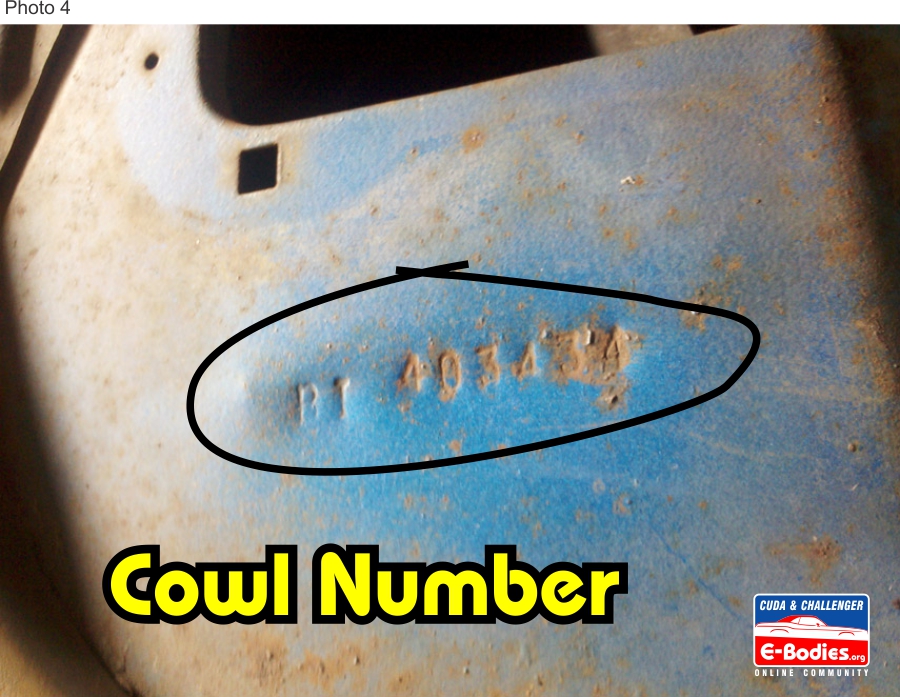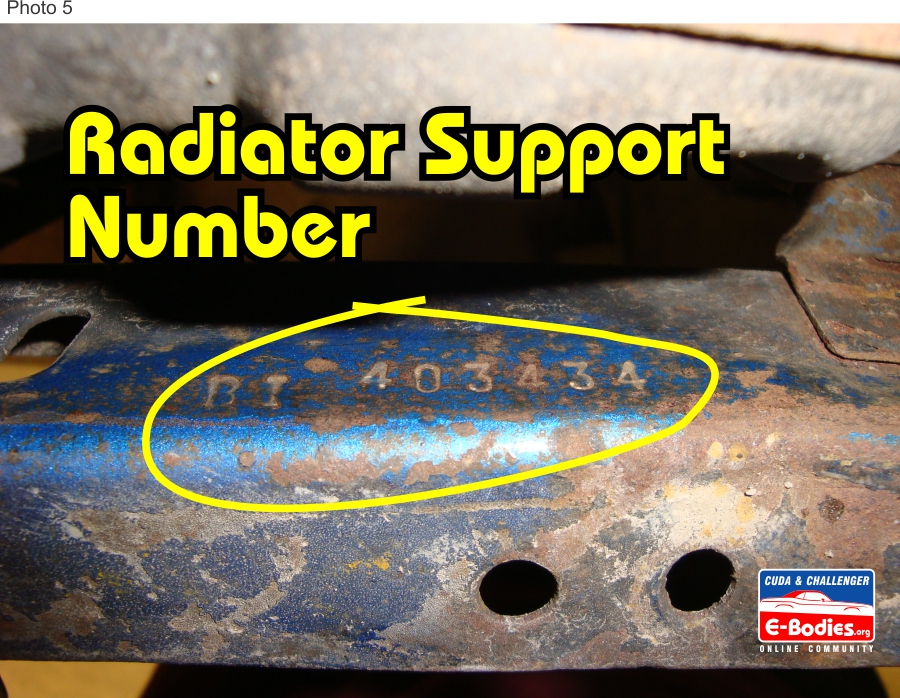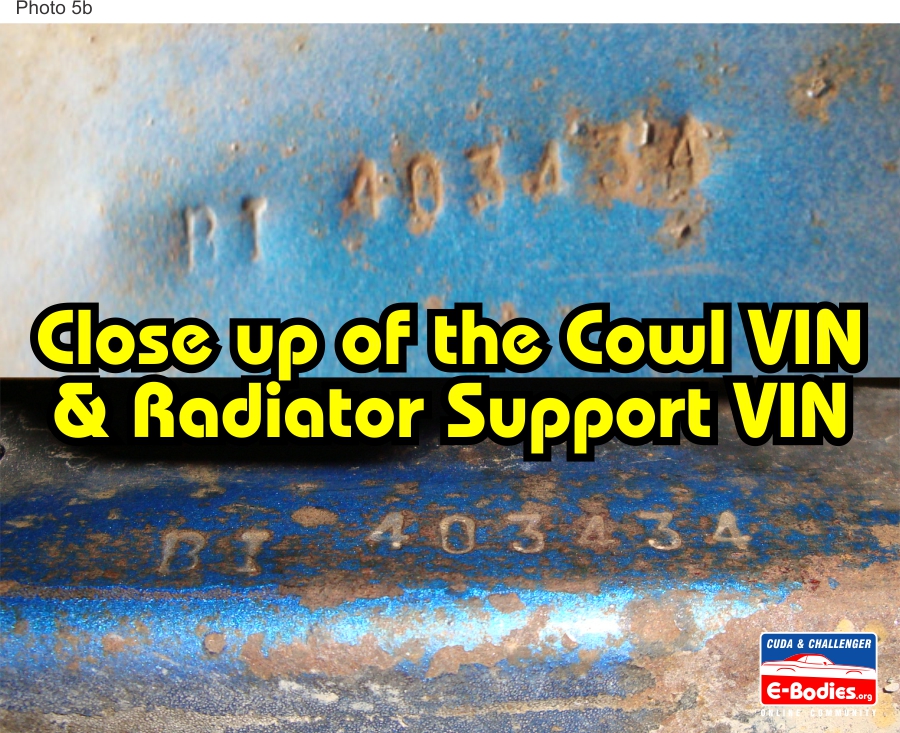Sometimes the Cowl stamping can be hard to see under years of dirt or layers of paint. Photo 4 is a close up of a Cowl VIN number.

At this time you might notice that the factory didn’t use the number 1 on the hidden Body VINs. Instead they would use the letter I. This is common and not something to be concerned about. But pay close attention to the alignment of the characters because both the Cowl and Radiator Support hidden Body VINs were stamped by the same tool and at the same time. And because they were stamped at the same time by the same tool they should match in size, font spacing and alignment. Validate similarities in font, alignment, spacing and wear. It’s common for some of the characters to be stamped deeper (or maybe a better term would be fatter) and some characters to be lighter. As the stamps wore down they would get replaced which resulted in thinner and crisper stampings . The letter “B” was used in every stamping at the Hamtramck factory because it was the letter code used to identify the location where the car was built. Therefore, the letter B would wear out much faster. When the stamp was replaced it would stamp sharp and clean, but when it wore down it would leave a fatter or less crisp stamping. This is true for all the letters and numbers as they would wear out at different times. Also, look closely at the alignment of the characters. The tool that was used to stamp these hidden Body VINs had wheels that could be turned to change the characters. So when the wheel was adjusted to stamp the Cowl and Radiator Support they normally didn’t make any changes between stamps. This resulted in both stampings having almost the same character alignment. So if one of the characters was slightly higher or lower, it’s highly likely it will be the same on both stamps. You’ll see in photo 5 (the Radiator Support VIN stamp) how after the BI the first “4” sits higher and the rest of the numbers slightly slope downward.

If you compare the Radiator Support VIN to the Cowl VIN you’ll see that the first “4” is higher and the rest slope down in the exact the same manner on both. The Body VINs in Photo 4 & 5 are a perfect match. That’s what you want. See Photo 5b.

The Radiator Support number is stamped on the drivers side of the cross member and normally on the back side of the support. Look down between the radiator and the radiator support cross member to see it. Sometimes it’s stamped on top of the cross member instead, but always in this general area (on the cross member). Either way, make sure that you find it and that it matches the Cowl and the Dash VIN. The hidden Body VIN on the Radiator Support is the most common one missing. Often times when a car was involved in a front end collision the cross support would be replaced and therefore, the hidden Body VIN was discarded.
There is one more thing to be aware of in regards to the two hidden Body VINs. There has been confirmed instances where people have cut the Body VIN numbers out and transferred them to different cars. In the hobby it’s called a “re-body” and mostly done on high dollar cars when a lot of money can be gained. Those cars can be trouble. You should stay away from any car that has had the Body Numbers switched with the main intention of making money on an unaware buyer.